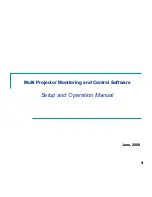
100
Copyright © Acronis, Inc., 2000-2010
To completely eliminate this kind of problem, disable preserving file security settings in archives. The
recovered files and folders will always inherit the permissions from the folder to which they are
recovered or from the disk, if recovered to the root.
Alternatively, you can disable recovery (p. 110) of the security settings, even if they are available in
the archive. The result will be the same - the files will inherit the permissions from the parent folder.
To access file or folder NTFS permissions, select
Properties
>
Security
.
3.4.1.15
Media components
This option is effective for both Windows and Linux operating systems, when the backup destination
is removable media.
When backing up to removable media, you can make this media work as regular Linux-based
bootable media (p. 350) by writing additional components to it. As a result, you will not need a
separate rescue disc.
The preset is:
None selected.
Select the check boxes for the components you want to put on the bootable media:
One-Click Restore
is the minimal addition to a disk backup stored on removable media, allowing
for easy recovery from this backup. If you boot a machine from the media and click
Run Acronis
One-click Restore,
the disk will be immediately recovered from the backup contained on the
same media.
Caution:
Because the one-click approach does not presume user selections, such as selecting volumes to
recover, Acronis One-Click Restore always recovers the entire disk. If your disk contains several volumes and
you are planning to use Acronis One-Click Restore, include all the volumes in the backup. Any volumes
missing from the backup will be lost.
Bootable agent
is a bootable rescue utility (based on Linux kernel) that includes most of the
functionality of the Acronis Backup & Recovery 10 agent. Put this component on the media if you
want more functionality during recovery. You will be able to configure the recovery operation in
the same way as under regular bootable media; use Active Restore or Universal Restore. If the
media is being created in Windows, the disk management functionality will also be available.
3.4.1.16
Error handling
These options are effective for Windows and Linux operating systems and bootable media.
These options enable you to specify how to handle errors that might occur during backup.
Do not show messages and dialogs while processing (silent mode)
The preset is:
Disabled
.
With the silent mode enabled, the program will automatically handle situations requiring user
interaction (except for handling bad sectors, which is defined as a separate option). If an operation
cannot continue without user interaction, it will fail. Details of the operation, including errors, if any,
can be found in the operation log.
Re-attempt, if an error occurs
The preset is:
Enabled
.
Number of attempts: 5. Interval between attempts: 30 seconds.
















































